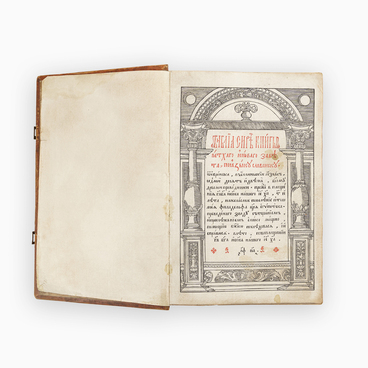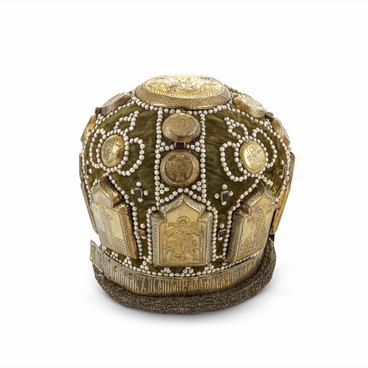The altar cross, also known as the processional or Korsun cross, features an image of the Crucifixion. Just like the khorugv — a sacred church banner — the altar cross is carried in front of religious processions. This cross is kept behind the altar opposite the Holy Doors with the icon of the Virgin: the cross is at the right corner of the altar, and the icon of the Virgin is at the left one. Such crosses are kept in every church.
Like the banner, the processional cross has as its prototype the banner of Constantine I the Great, who saw a shining cross in the sky with the inscription “In this, conquer!”. After this miraculous appearance, Constantine converted to Christianity. The ruler commissioned a cross on a high shaft and defeated the enemy under this banner.
In Byzantium, church processions with the cross were widespread. With the adoption of Christianity, such crosses came to Rus and became known as Korsun crosses — apparently because it was in Korsun (Chersonesos) that the Orthodox clergy arrived from Byzantium. Later, wooden altar crosses became popular in Russia — both carved ones and painted crosses depicting the Crucifixion. Thus, a cross is a spiritual banner, a symbol of the victory of Christ and His faithful followers.
The altar cross presented in the Museum of Russian
Heritage is decorated with five domes with large eight-pointed crosses. The
background is golden in color, which according to the canon is considered a
symbol of God’s Kingdom, a symbol of power. The Crucifixion scene with saints
is depicted in the center: the Virgin stands next to the Son of God, and John
the Theologian, one of the twelve apostles, stands on the other side of the
cross. To the left and to the right of the Savior there are crosses with
crucified thieves. Above them there are images of the sun and moon, archangels
and God the Father. The crosses stand on cracked earth. This is a reference to
another biblical event, when an earthquake occurred at the moment of Christ’s
Crucifixion. Three Roman soldiers with spears are depicted in a circle located
below the Savior’s cross. They divide the robes of Jesus Christ among
themselves. The reverse side of the cross features the “Deisis”. It is an icon
or group of icons with a traditional representation of Christ in Majesty in the
center, flanked by the Mother of God and John the Baptist.







